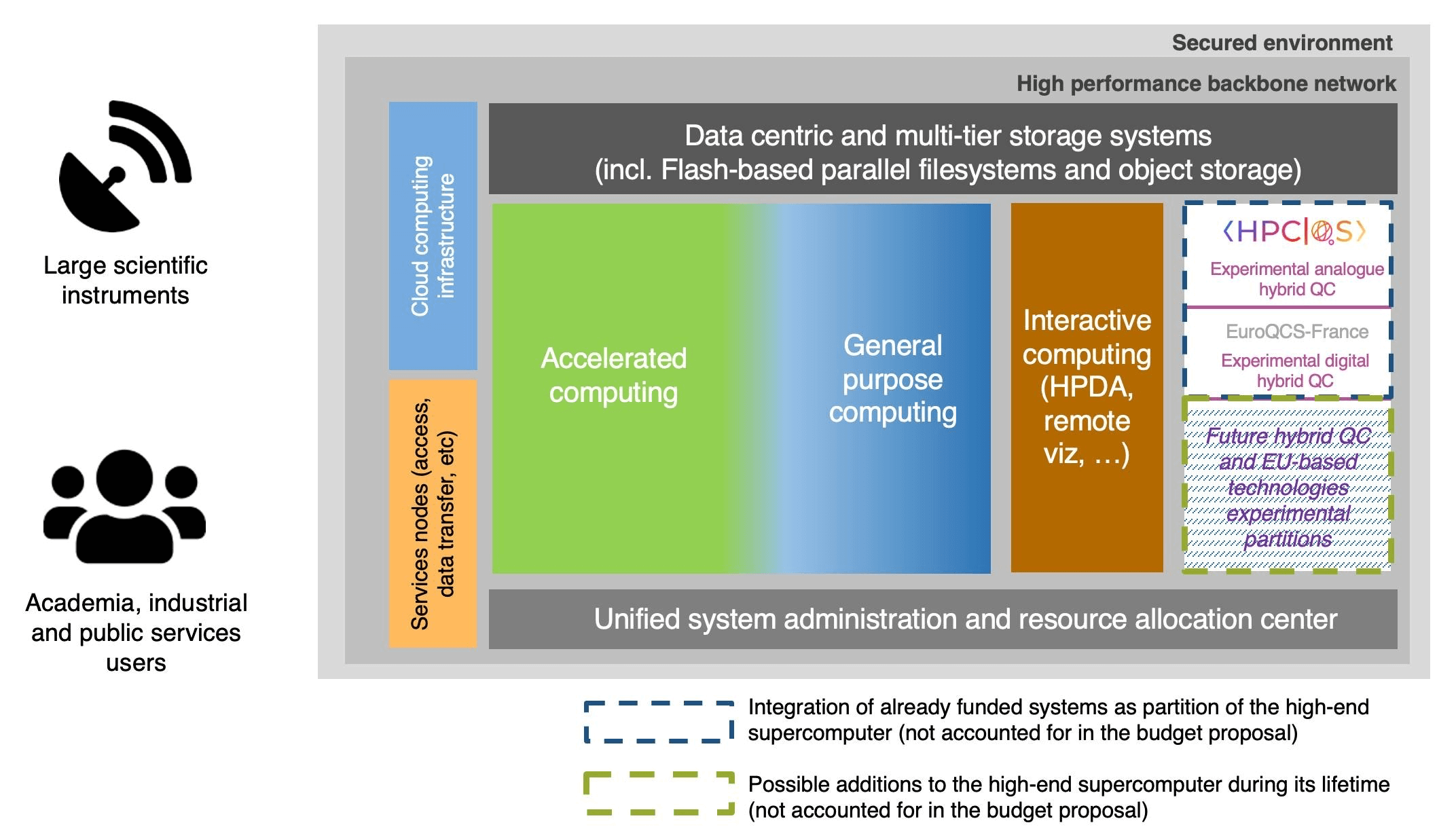After being procured by EuroHPC JU, this supercomputer will be hosted end of 2025 in the TGCC building (Très Grand Centre de calcul du CEA, i.e. very large computing centre of CEA), benefiting from the expertise of CEA’s HPC division in operating large scale HPC systems like Joliot-Curie (GENCI, for open research) and Topaze (CCRT, for industrial research).
The main objective of the Jules Verne application to EuroHPC is to deploy a world-class Exascale supercomputer, based on European hardware and software technologies, addressing European major societal and scientific challenges via the convergence at scale of numerical simulations, massive data analysis and artificial intelligence.
Indeed, answering very important societal and global issues in the framework of Dutch and French national strategies objectives like the ones of France2030, the supercomputer will act as a sovereign accelerator in modelling more precisely the effects of climate change, in the development of new materials, energies and decarbonized mobility, in the rise of digital twins of the human body toward personalized medicine or in the training of next generation of generative AI or multimodal models. It will also address the challenges related to the explosion of data generated by scientific instruments (such as telescopes, satellites, sequencers, microscopes, networks of sensors…), by IoT/Internet devices or by large multi numerical simulations. This data deluge has made the use of such supercomputers crucial for science, industry and decision makers, in order to ingest, infer, simulate and value such data in competitive times and in the most energy efficient way.
Following previous deployments of EuroHPC systems like JUPITER (in Germany), the first Exascale system in Europe in 2024, Jules Verne will provide to European, French and Dutch researchers an unprecedented compute capacity of more than 1 Exaflops - one billion of billion (“1” followed by 18 zeros) of calculations per second, equivalent to more than 5 million modern laptops or PCs, with more than 300+ PB of storage at start.
The reference design of the supercomputer is based on a modular and energy-efficient architecture providing several compute, pre/post processing and service partitions federated by a high-speed internal interconnect, sharing access to a tiered data-centric storage architecture, and managed by a unified system administration and resource management stack. Taking benefit of on-going French and European initiatives, it will also incorporate experimental hybrid quantum computing partitions and will be open to host additional new EU-based sovereign technologies, paving the path to post Exascale architectures.

General architecture of the proposed Exascale Supercomputer © CEA/Genci
Beyond the machine itself the Jules Verne consortium, in relation with others EuroHPC’ consortiums, will provide user support to European researchers in porting and optimising their applications on the supercomputer as well as training. In this perspective, Jules Verne seeks to collaborate with all European Centers of Excellence (CoE) and end users communities toward the inception of the system and has already established relationships with national R&D Exascale projects like France 2030 NumPEx program. The NumPEx program aims at designing and developing software components that will equip future Exascale machines and preparing the major scientific and industrial application domains to fully exploit the capabilities of these machines. The NumPEx program has a budget of 40,8 M€ over 5 years.
The overall costs for the acquisition and operation of the system during 5 years are 542 million euros. Of this total, 271 million euros is being provided by EuroHPC JU, 8 million euros by the Dutch Ministry of Culture, Education and Science and 263 million euros mainly by the French Government. ONERA and IFPEN have expressed their interest for joining the French part of the consortium, paving the way for additional French research groups and industrial companies.
Beyond France and The Netherlands, the Jules Verne consortium is open to add other countries, as partners sharing the same vision at the service of science, innovation and sovereign technologies.